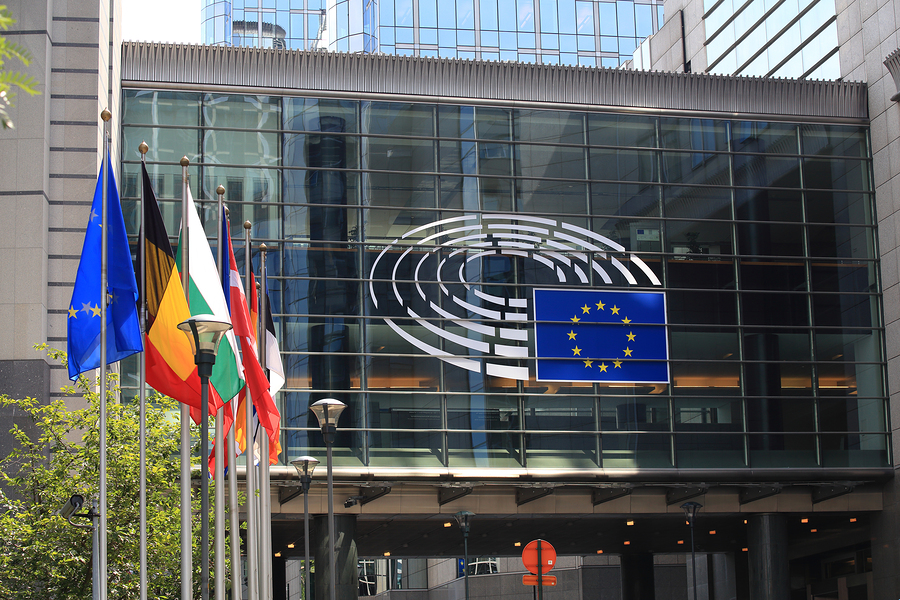European Parliament's environment committee has made its changes. Next is a plenary debate and vote ahead of the secretive Council/Parliament/Commission talks before it comes into force. When it does ship operators will need to act quick.
Ship operators need to begin preparing for entry into Europe’s emission trading scheme. The long-debated entry of shipping into the European ETS came a significant step closer this week, with some significant changes being agreed.
The European Parliament’s Environment Committee voted on draft text regarding the latest overhaul of the ETS, primarily as a way to make the trading system more powerful and an integral part of the region’s host of measures known as the Fit for 55 packages.
The Fit for 55 package has three key elements that relate to shipping: The Fuel EU maritime Directive, a set of infrastructure requirements and the amendment of the ETS with shipping bring brought into its remit.
The amendments to the ETS that were agreed by the Environment committee this week still need to be discussed and voted on at a Parliamentary plenary on June 7th, and then fully agreed at the European tripartite talks between the Parliament, Commission and Council of ministers after the plenary vote.
While the former is seen by some as unlikely to create additional changes, there are fears that some member states may attempt to soften the impact of the ETS on shipping, while others think that the Env committee amendments have already done so.
This has not stopped Transport and Environment who have published a EU states shipping rankings on their ambition levels compared to the European proposals. The objective according to T&E is to force more transparency in the debates within the European Council and subsequently the tripartite talks which will be the last stumbling block to creating the tough regulations the lobby groups believes is needed.
The points you need to know
- The ETS will apply to ships from January 1 2024.
- A lowering of the minimum tonnage from ‘above 5000 gross tonnage to 400gt and above, although vessels between 400gt and less than 5,000gt ‘shall only be required to report the information which is relevant for the inclusion of such ships within the scope of the EU ETS by 1 January 2028.’
- The scope of the ETS on shipping will cover 100% of emissions during voyages between EU ports, and for 50% of the emissions on voyages to and from EU ports and non EU ports. This will run until December 31st 2026, and form the start of 2027 the full voyage emissions will be covered by the ETS.
- Ice class vessels and vessels sailing to “outer regions” have been given the opportunity to surrender fewer allowance under the ETS, but only to the end of 2029.
- The requirement for compliance with the regulation will now fall with the commercial operator not the shipping company. The amended text states ‘Where the ultimate responsibility for the purchase of the fuel or the operation of the ship is assumed, pursuant to a contractual’
- arrangement, by an entity other than the shipping company, that entity shall be responsible under the contractual arrangement for covering the costs arising from compliance with the obligations under this Directive.’
- A carbon border adjustment mechanism to be established to prevent carbon leakage and incentivise reductions in non-EU countries would apply from January 1st 2023. The CBAM would include steel, refineries and cement along with other imported products, as well as indirect emissions such as electricity use by manufacturers.
- Not just CO2 but other greenhouse gases will be covered, notably methane, which will require methane slip accounting, and N2O.
- Other emissions could be added in the future. The ENV committee agreed that “By 31 December 2024, the Commission, supported by the European Scientific Advisory Board on Climate Change….. shall assess, and report to the European Parliament and to the Council on the impact on the global climate of greenhouse gas emissions other than CO2, CH4 and N20 and of particles with a global warming potential, from ships arriving at, within or departing from ports under the jurisdiction of a Member State. That report shall be accompanied, where appropriate, by a legislative proposal to address the question of how to deal with such emissions and particles.”
- Money raised from shipping will be allocated into a European Ocean Fund.
- The scope gives opportunity to collaborate with other markets with similar market base measures where shipping can be added to these.
- Carbon leakage is also address with texts referencing the ability to identify certain ‘evasive’ ports where transhipments take place close to EU ports and subsequent ability to account for emissions accordingly.
- 75 % of the revenues generated from the auctioning of maritime allowances shall be put into an Ocean Fund to support the transition to an energy efficient and climate resilient EU maritime sector.
- Smaller operators and those with vessels not frequently visiting EU ports, will have the option of paying directly into a fund rather than try to sell and buy allowances in the ETS.
- All information on the projects and investments supported by the Ocean Fund and all other relevant information on the functioning of the Ocean Fund shall be made available to the public.
- The fund can be used to support ports and shipping, the introduction of new fuels, new technologies, including wind propulsion technologies, ideas that reduce noise and other pollution, carbon contracts for difference, and even allocated to countries outside the European Union, notably least developed countries and small island nation states.
































